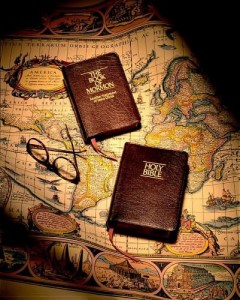Joseph Smith had received numerous revelations on gospel principles, as well as instruction from the Lord on how to establish The Church of Jesus Christ of Latter-day Saints (Mormon Church). Although the revelations were often announced in conferences, and Joseph often gave copies to Mormon missionaries and other Mormon Church leaders, most people didn’t know what was contained in the revelations. The printing press that was set up in Missouri by W.W. Phelps solved this problem. In November of 1831, numerous meetings and conferences were held to discuss the printing of these revelations. By this point, Joseph Smith had recorded 60 revelations. It was decided that ten thousand copies of the revelations would be printed in the form of a book. This large number was later reduced to only three thousand printings of the book. The book was entitled the Book of Commandments, and the revelation found in Doctrine and Covenants, Section 1 was to be included as the preface to the book. An appendix was created for the book, and Joseph Smith went through and corrected any errors that could be found in the written manuscripts of the revelations. John Whitmer and Oliver Cowdery were given the responsibility of taking the manuscripts to Missouri. They left on November 20, 1831, and finally arrived in Independence, Missouri on January 5, 1832. In June, W.W. Phelps began setting the type for the book.Nearly a third of all the revelations in the Doctrine and Covenants were received between Aug. 1831 and April 1834. Joseph Smith stated that the revelations in the Book of Commandments (the name was later changed to the Doctrine and Covenants in 1835, when an expanded version of the book was printed in Kirtland, Ohio) were “the foundation of the Church in these last days.”
The Introduction to the Doctrine and Covenants states, “Most of the revelations in this compilation were received through Joseph Smith, Jun., the first prophet and president of The Church of Jesus Christ of Latter-day Saints. Others were issued through some of his successors in the Presidency. (See headings to Sections 135, 136, and 138, and Official Declarations 1 and 2.)”
 As one of the standard works of the Mormon Church, the Doctrine and Covenants is unique in that it is not a translation of an ancient document. Rather, it is of modern origin and was given from God through his chosen prophets as part of the restoration of the gospel and the establishment of the kingdom of God on the earth in modern times
As one of the standard works of the Mormon Church, the Doctrine and Covenants is unique in that it is not a translation of an ancient document. Rather, it is of modern origin and was given from God through his chosen prophets as part of the restoration of the gospel and the establishment of the kingdom of God on the earth in modern times
The revelations relate to such gospel doctrines as the nature of the Godhead, the origin of man, the reality of Satan, the purpose of mortality, the necessity for obedience, the need for repentance, the workings of the Holy Spirit, the ordinances necessary for salvation, the destiny of the earth, the resurrection and final judgment (as well as what comes afterward), the eternal nature of the marriage relationship, and the eternal nature of the family. The Doctrine and Covenants also reveals the administrative structure of the Mormon Church, detailing the duties of bishops, the First Presidency, the Quorum of the Twelve Apostles, and the Seventy, as well as the establishment of other presiding offices and quorums.
Lastly, the Doctrine and Covenants is a testimony that Jesus is the Christ, and that He governs His Church and speaks to His chosen servants in modern times as He did in ancient times.